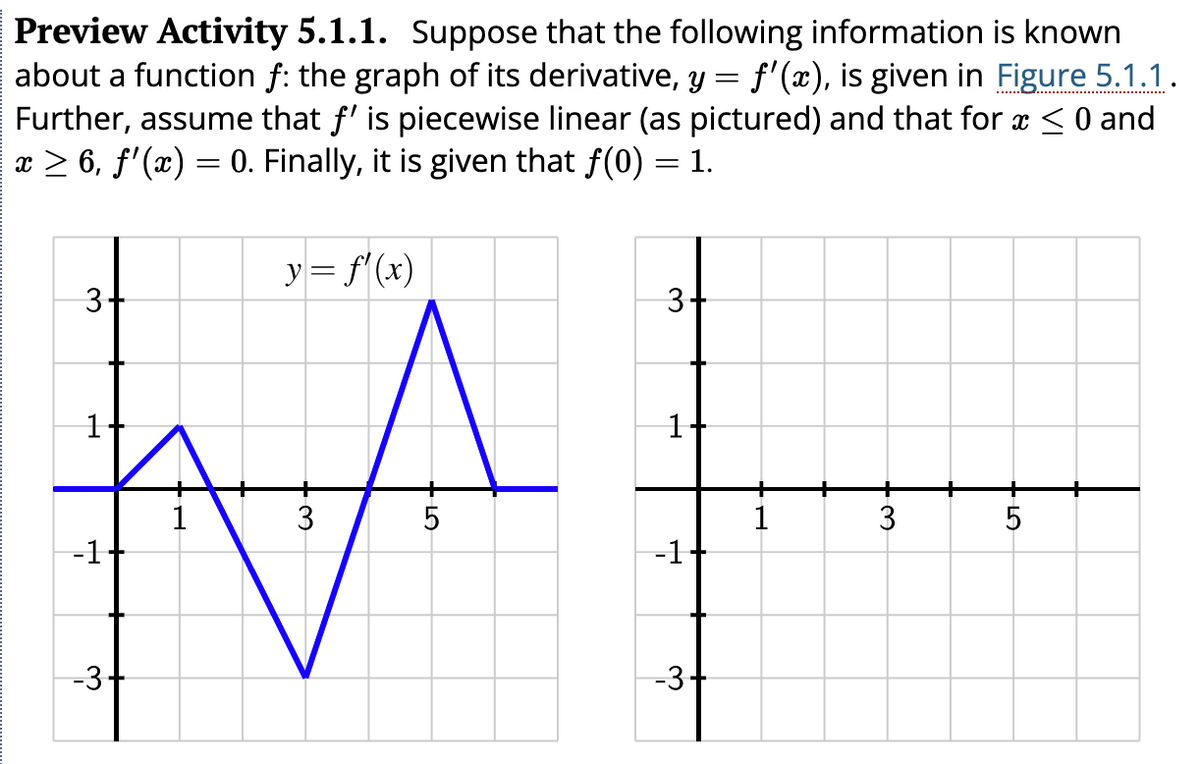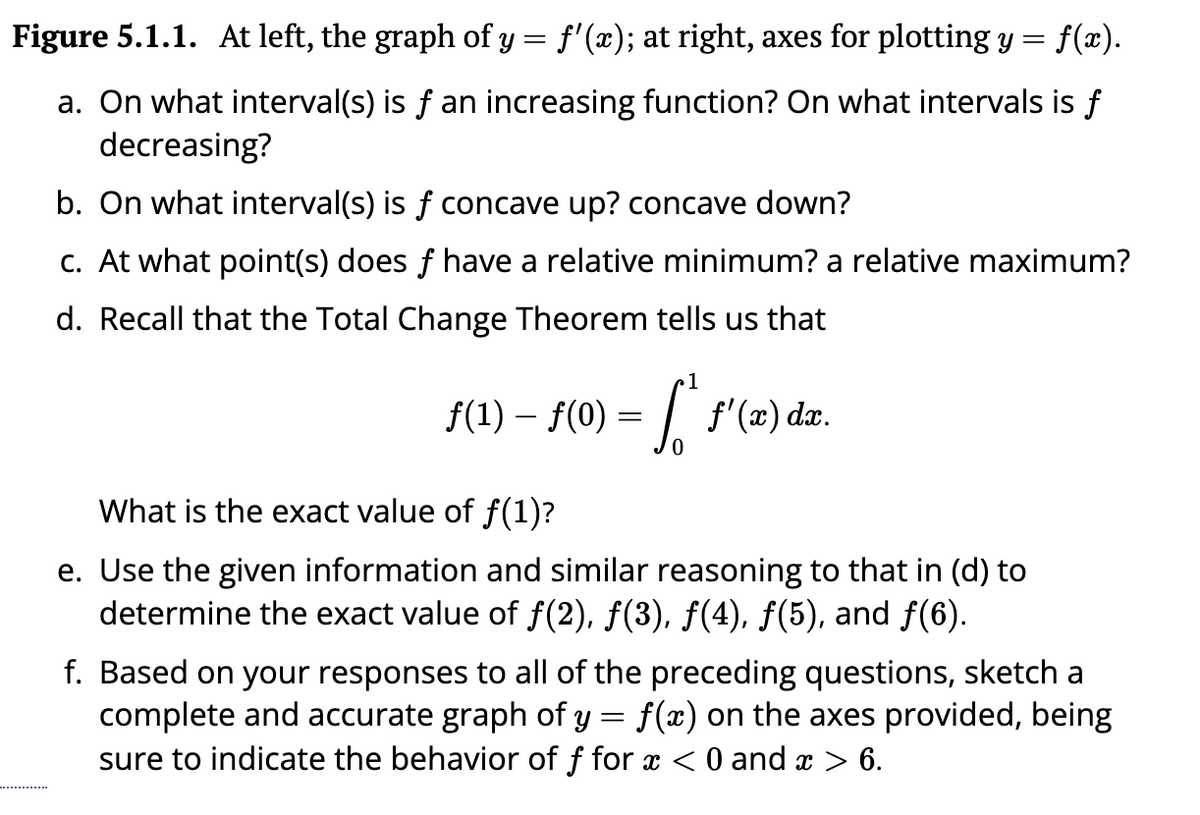Preview Activity 5.1.1. Suppose that the following information is known about a function f: the graph of its derivative, y = f'(x), is given in Figure 5.1.1 Further, assume that f' is piecewise linear (as pictured) and that for x ≤ 0 and x ≥ 6, ƒ'(x) = 0. Finally, it is given that ƒ(0) = 1.
Preview Activity 5.1.1. Suppose that the following information is known about a function f: the graph of its derivative, y = f'(x), is given in Figure 5.1.1 Further, assume that f' is piecewise linear (as pictured) and that for x ≤ 0 and x ≥ 6, ƒ'(x) = 0. Finally, it is given that ƒ(0) = 1.
Functions and Change: A Modeling Approach to College Algebra (MindTap Course List)
6th Edition
ISBN:9781337111348
Author:Bruce Crauder, Benny Evans, Alan Noell
Publisher:Bruce Crauder, Benny Evans, Alan Noell
Chapter1: Functions
Section1.2: Functions Given By Tables
Problem 32SBE: Does a Limiting Value Occur? A rocket ship is flying away from Earth at a constant velocity, and it...
Related questions
Question
Only need part f answered, please. Thank you!

Transcribed Image Text:Preview Activity 5.1.1. Suppose that the following information is known
about a function ƒ: the graph of its derivative, y = f'(x), is given in Figure 5.1.1.
Further, assume that ƒ' is piecewise linear (as pictured) and that for x ≤ 0 and
| x ≥ 6, ƒ'(x) = 0. Finally, it is given that ƒ(0) = 1.
-
-1
-3-
y = f'(x)
3
LO
5
3
-1
-3
3
5

Transcribed Image Text:Figure 5.1.1. At left, the graph of y = f'(x); at right, axes for plotting y = f(x).
a. On what interval(s) is ƒ an increasing function? On what intervals is f
decreasing?
b. On what interval(s) is ƒ concave up? concave down?
c. At what point(s) does f have a relative minimum? a relative maximum?
d. Recall that the Total Change Theorem tells us that
1
ƒ(1) — ƒ(0) = √ ^ f'(x) dx.
0
What is the exact value of f(1)?
e. Use the given information and similar reasoning to that in (d) to
determine the exact value of f(2), ƒ(3), ƒ(4), ƒ(5), and ƒ(6).
f. Based on your responses to all of the preceding questions, sketch a
complete and accurate graph of y = f(x) on the axes provided, being
sure to indicate the behavior of f for x < 0 and x > 6.
Expert Solution
This question has been solved!
Explore an expertly crafted, step-by-step solution for a thorough understanding of key concepts.
This is a popular solution!
Trending now
This is a popular solution!
Step by step
Solved in 2 steps with 2 images

Recommended textbooks for you

Functions and Change: A Modeling Approach to Coll…
Algebra
ISBN:
9781337111348
Author:
Bruce Crauder, Benny Evans, Alan Noell
Publisher:
Cengage Learning

Algebra & Trigonometry with Analytic Geometry
Algebra
ISBN:
9781133382119
Author:
Swokowski
Publisher:
Cengage

Trigonometry (MindTap Course List)
Trigonometry
ISBN:
9781337278461
Author:
Ron Larson
Publisher:
Cengage Learning

Functions and Change: A Modeling Approach to Coll…
Algebra
ISBN:
9781337111348
Author:
Bruce Crauder, Benny Evans, Alan Noell
Publisher:
Cengage Learning

Algebra & Trigonometry with Analytic Geometry
Algebra
ISBN:
9781133382119
Author:
Swokowski
Publisher:
Cengage

Trigonometry (MindTap Course List)
Trigonometry
ISBN:
9781337278461
Author:
Ron Larson
Publisher:
Cengage Learning